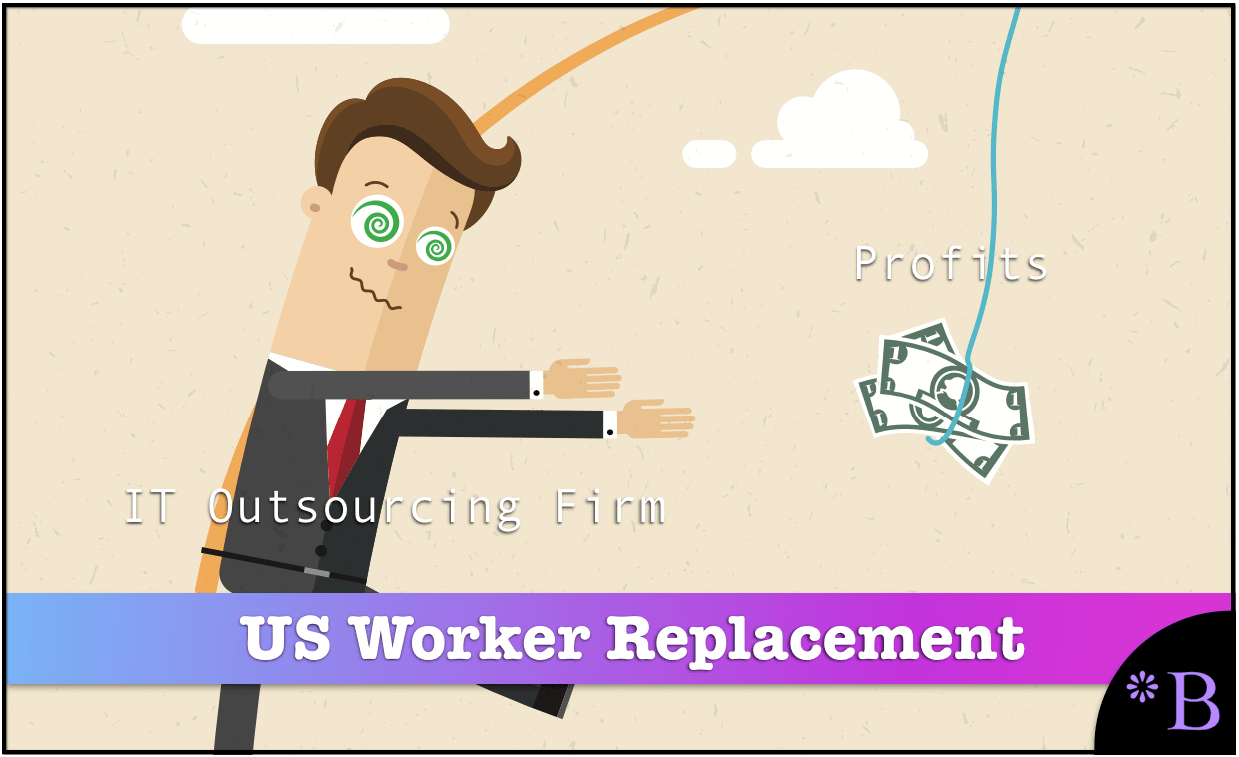The Amazing Profits in Displacing US Workers with H1-B Visa Workers
Executive Summary
- Companies are making enormous profits by simply replacing US workers with H1-B visa workers.
- We cover how profitable this business is.

Introduction
This is from Ron Hira, of the top researchers in the area of H1-B.
The principal reason that firms use H-1Bs to replace American workers is because H-1B nonimmigrant workers are much cheaper than locally recruited and hired U.S. workers. As Table 1 shows, Infosys and Tata pay very low wages to their H-1B workers. The average wage for an H-1B employee at Infosys in FY13 was $70,882 and for Tata it was $65,565. Compare this to the average wage of a Computer Systems Analyst in Rosemead, CA (where SCE is located), which is $91,990 (according to the U.S. Department of Labor). That means Infosys and Tata save well over $20,000 per worker per year, by hiring an H-1B instead of a local U.S. worker earning the average wage. But at SCE specifically, the wage savings are much greater. SCE recently commissioned a consulting firm, Aon-Hewitt, to conduct a compensation study, which showed that SCE’s IT specialists were earning an average annual base pay of $110,446. That means Tata and Infosys are getting a 36 to 41 percent savings on labor costs—or saving about $40,000 to $45,000 per worker per year. – Economic Policy Institute
This is also covered by Dr Norm Matloff.
The underpayment of H-1Bs is well-established fact, not rumor, anecdote or ideology. It has been confirmed by two congressionally-commissioned reports, and a number of academic studies, in both statistical and qualitative analyses.
U.S. Rep. Zoe Lofgren, a Democrat whose Congressional district includes Silicon Valley, framed the wage issue at the hearing, sharing the response to her request for some wage numbers from the U.S. Department of Labor.
Lofgren said that the average wage for computer systems analysts in her district is $92,000, but the U.S. government prevailing wage rate for H-1B workers in the same job currently stands at $52,000, or $40,000 less.
“Small wonder there’s a problem here,” said Lofgren. “We can’t have people coming in and undercutting the American educated workforce.”
And the following.
SoftPac, an organization of computer programmers which was formed to lobby against the H-1B program, ran a “sting” operation to show how easy it was to secure approval from the DOL for an obviously-invalid LCA. The DOL approved SoftPac’s application for a visa for a programmer who would be paid only $5.00 per hour. – Dr Norm Matloff
This was an LCA that was deliberately created to be invalid, and the H1-B was approved anyway.
Conclusion
The profits of displacing/replacing US workers with H1-B workers that we can expect the major multinationals involved with wholesale US worker replacement to continue claim that a skills shortage is driving their need for ever more H1-Bs.
Cognizant brought in close to 28,908 workers in a single year under H1-Bs as we cover in the article Cognizant Receives Approval for 28,908 H1-B Visas in a Single Year. And what is Cognizant going to do with those workers? They will be pitching the continual outsourcing of IT department work to them, leading directly to the firing of US workers.
References
*https://www.epi.org/blog/new-data-infosys-tata-abuse-h-1b-program/
https://en.wikipedia.org/wiki/H-1B_visa
http://heather.cs.ucdavis.edu/itaa.real.html
https://www.nohr1044.com/